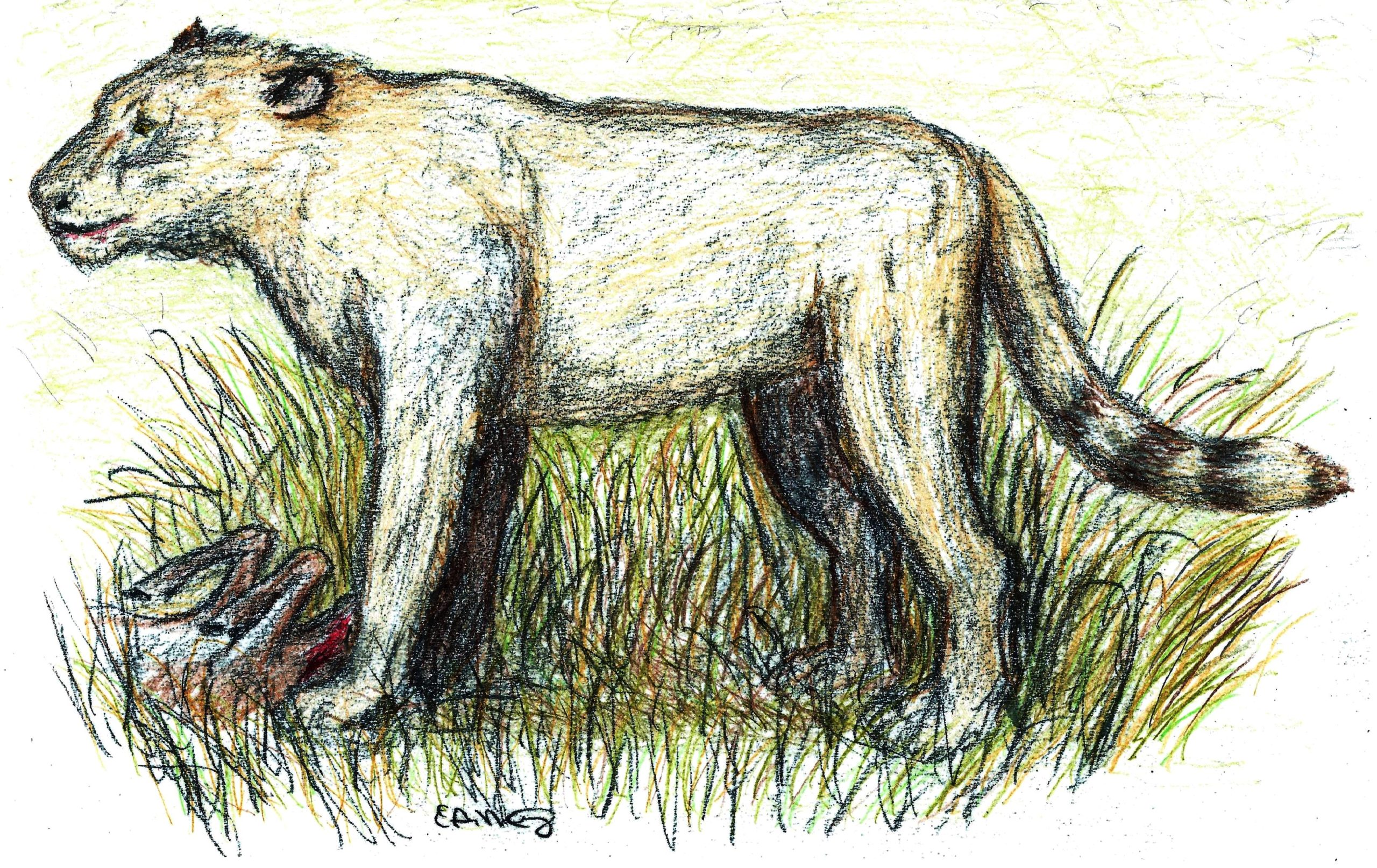
The Eurasian Cave Lion (Panthera spelaea) is known to us mostly through its fossilized skeletal remains and the exquisitely detailed imagery left behind by early humans on cave walls. The fossils tell a tale of a large predator, somewhat bigger than today’s African lions. They may have been as much as 11 and a half feet in length from their nose to the tip of their tail, and reached weights of up to 880 pounds. Male cave lions are depicted without manes in cave art. Some of the ancient paintings seem to show faint striping on parts of the cave lion’s body.
These impressive animals are included in several of the Dreamer Book Series: An Ice Age Saga novels; as they surely would have been well known to Ice Age humans and been a source of awe and -at least occasionally- terror, to those who encountered them. This versatile and fearsome hunter was known to inhabit most of Eurasia and the very northwestern parts of the North American continent.
In 2015 two cave lion cubs were discovered where they had been buried in a landslide in Siberia, and were preserved in permafrost for tens of thousands of years. The approximately two week old kittens were were an astounding find and have done much to contribute to our understanding of these animals. A well-preserved third cub, about six to eight weeks old at time of death, was also found in permafrost in 2017. Lastly, a fourth cub was located in 2018. It was found near the 2017 cub; close enough to make scientists think that it might have been a sibling. There is speculation that future digs might reveal the existence of more siblings, or possibly even the remains of the cubs’ mother.
The most recent Eurasian cave lion remains have been dated to about 14,000 years *BCE. They are believed to have gone extinct by 10,000 years *BCE.
*BCE = Before Common Era.
Total Page Visits: 3606 |
